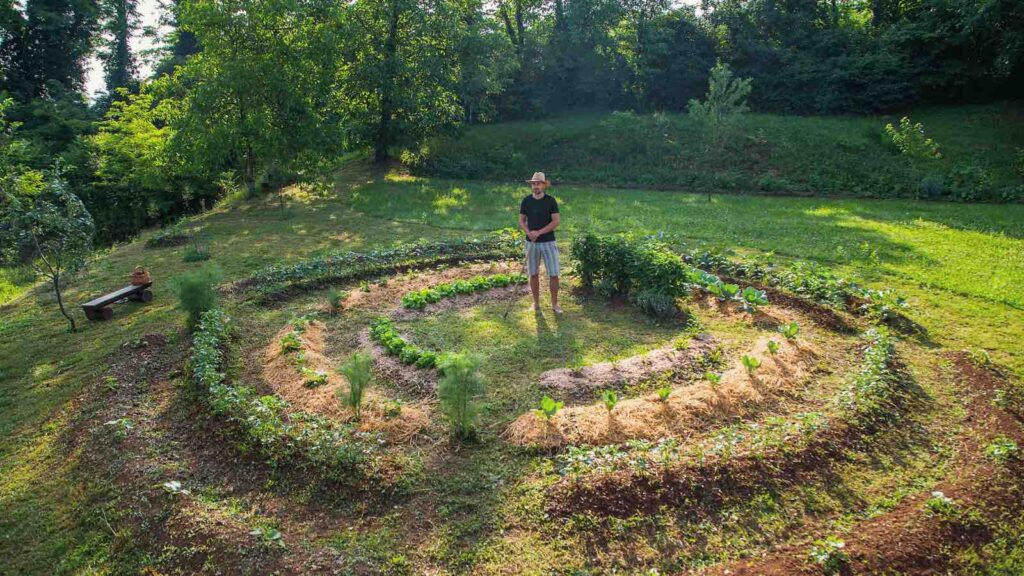If you’ve heard about permaculture and are wondering what it’s all about, then this is your brief introduction!
In the midst of burgeoning technology and its unprecedented influence on daily life, there emerges an essential discourse on the need for responsible technology that echoes the holistic approach of permaculture principles. The ethos of permaculture, short for “permanent agriculture” or “permanent culture”, provides a roadmap for a sustainable and ethical approach to technology.
RELEVANT SUSTAINABLE GOALS



Permaculture Principles x Responsible Technology
Crafted in the 1970s by scholars Bill Mollison and David Holmgren, permaculture encapsulates a methodology of designing ecological systems. It not only emulates the symmetry and balance found in nature but also underlines sustainable productivity. The underlying philosophy here is to harness nature as a template for ethical design and development, thereby ensuring that our engagement with the environment is constructive and non-exploitative.
Why does this matter to a technologist, one might ponder? The answer is simple yet profound: amidst the aggressive strides towards Artificial Intelligence and the opaque future it heralds, it becomes imperative to establish a connection between ethical farming and ethical technology. The permaculture principles, twelve in total, offer invaluable insights into this domain. Through this two-part series, we delve into the initial six principles, elucidating their relevance and application in responsible technology.
Principle 1: Observation and Interaction
At the outset, permaculture mandates a keen observation of the environment. This involves understanding the existing ecosystem’s natural patterns and relations before introducing changes. The process, which might span weeks to years, requires a close watch on various elements like existing plants, sunlight patterns, wind direction, water sources, and soil quality. In the realm of technology, this observation translates into understanding users’ needs and pain points, along with assessing the societal and environmental impact of design decisions.
Principle 2: Catch and Store Energy
Permaculture gives paramount importance to efficient energy capture and storage, making it imperative to design systems that are energy-efficient, like rainwater harvesting mechanisms that utilize gravity for water distribution. Similarly, in the technological domain, energy efficiency is crucial, with websitecarbon.com offering insights into the energy efficiency of websites and agencies providing sustainable website building services.
Principle 3: Obtain Yield
This principle underscores the need for tangible benefits or yields from the system, extending beyond food to include energy, knowledge, habitat, or income. In technology, it serves as a reminder to seek beneficial yields without harming the environment or indulging in overconsumption.
Principle 4: Apply Self-Regulation And Accept Feedback
Incorporating feedback is fundamental to permaculture, making designs dynamic and adaptable. With feedback loops playing a pivotal role, permaculture designs are expected to be flexible and resilient, with multiple elements serving similar purposes to ensure the system’s stability.
Principle 5: Use and Value Renewable Resources
Renewable resources, being continuously available, are central to permaculture. These resources, ranging from solar energy to wind and water, reduce environmental impacts and support long-term sustainability. In technology, it primarily applies to the energy used to power data centers and the use, repair, and recycling of electronic devices.
Principle 6: Produce No Waste
Mindful resource utilization is key to permaculture. Practices like composting, using reusable containers, and food preservation techniques are crucial. Even animal waste is viewed as a valuable resource that enhances soil fertility and ecosystem health when managed properly.
Permaculture and technology, seemingly disparate, share an undercurrent of principles centered on sustainability and ethical practice. These principles, when applied to technology, promise a future where technology not only advances in leaps and bounds but does so responsibly and ethically. Stay tuned for Part 2, where we unravel the remaining principles and their resonance in crafting technology that is in harmony with nature and humanity.
You may also be interested in :
Accelerating Biodiversity-Positive Impact : A Conversation With Silverstrand Capital’s Kelvin Chiu



